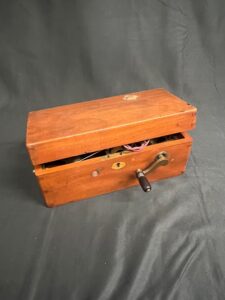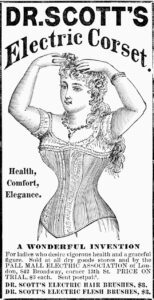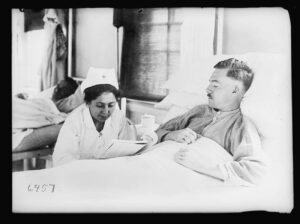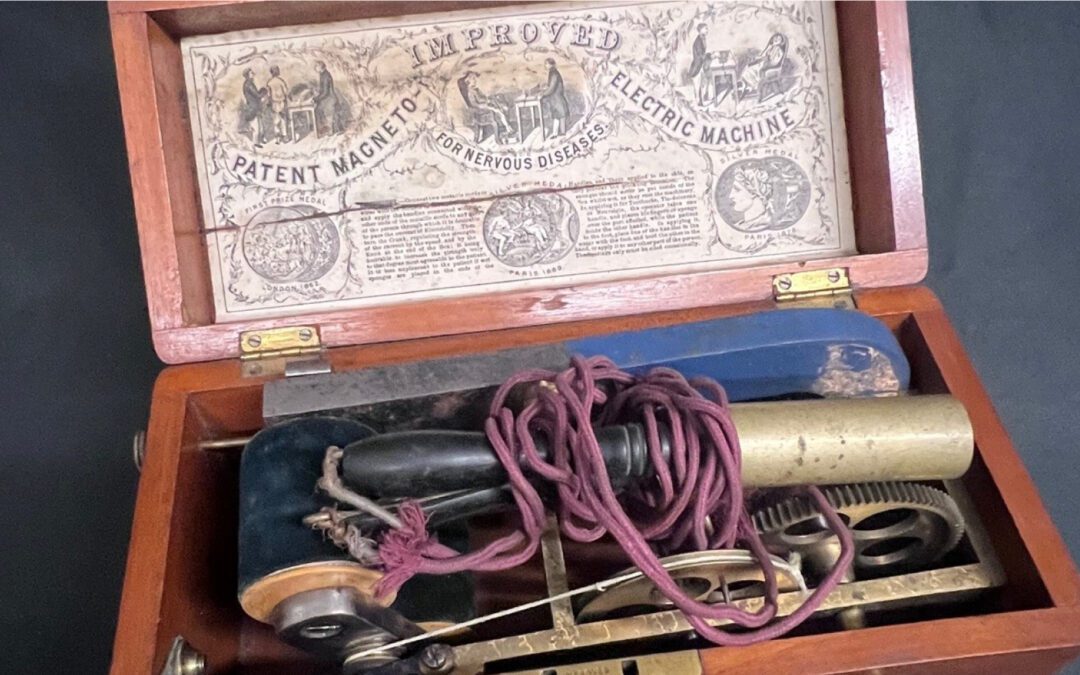In today’s Forgotten Friday, we are looking into some recent donations we have had come into the Collections & Engagement Department.
We were donated many fantastic artefacts this week, including an original Victorian ‘Improved Patent Magneto-Electric Machine for Nervous Diseases’.
The Improved Patent Magneto-Electric Machine for Nervous Diseases, c.1870.


This was an extraordinary piece of medical apparatus is this nineteenth-century electric shock machine, entitled “Improved Patent Magneto-Electric Machine for Nervous Diseases”. The contraption comprises a brass handle, ornate brass wheel, a large magnet, two coils of wire, and two brass tubes attached to cables through which the current flows, all housed in a polished wooden case. On the underside of the lid is the charming original label for the machine, which carries instructions for use, and also rather amusing illustrations of the machine in use.
The first practical machine of this type was made by M. Hippolyte of Paris in 1832. They were enormously popular in the second half of the nineteenth century, coinciding with the excitement generated by new discoveries in electricity, medicine, and science. In the late nineteenth century, it was claimed that electricity could treat almost every conceivable ailment, and one could buy an electric helmet, an electric corset for ladies who wished to shed a few pounds, gents could purchase “Dr Moffat’s Electropathic Belt for Extra Vigour”, electropathic socks, or even “Dr Scott’s Electric hairbrush”.

A bizarre and slightly intimidating machine by today’s standards, but possibly a superb example of Victorian experimental insanity, without which we wouldn’t have half of the machines we have today!
Although this artefact is indeed Victorian, Electric Shock Therapy was used during the First World War to treat illnesses such as shell shock. The treatments of shell shock were many and varied. Disciplinary treatment was the most common at the time. The doctors involved with this form of treatment had harsh moral views of hysteria and stressed quick cures as the goal of wartime psychiatry was to keep men fighting. Shaming, physical re-education and the infliction of pain were the main methods used. Electric Shock Treatment was very popular. This involved an electric current being applied to various body parts to cure the symptoms of shell shock. For example, an electric current would be applied to the pharynx of a soldier suffering from mutism or to the spine of a man who had problems walking.

Another form of treatment consisted of “finding out the main likes and dislikes of patients and then ordering them to abstain from the former and apply themselves diligently to the latter”. Patients who had a fear of noise were given rooms looking onto a main road, men who had been teachers or writers before the war were refused access to the library and men who feared being alone were put into isolation.
H. R. Rivers was a psychiatrist in Craiglockhart Medical Hospital, and it became one of the few hospitals to practice psychotherapy in the United Kingdom at the time. For example, when the famous war poet Siegfried Sassoon was a patient in the hospital, Rivers treated him using psychotherapy. Every day Sassoon would have a session with the doctor during which they would discuss his war experiences. Many doctors refused to use this form of therapy on shell shock victims as it sometimes took patients years to recover and very few returned to the war.
Electroconvulsive therapy (ECT) is still used a medical treatment for patients with severe major depression or bipolar disorder that has not responded to other treatments. ECT is a last resort nowadays and involves a brief electrical stimulation of the brain while the patient is under anaesthesia. The risks and benefits are still widely argued around the world, an alternative medicines are preferred by most medical professionals.
We are currently displaying this machine inside of Hut 21 in our Red Cross medical scene.
Book your tickets now to see this and other fascinating items we have on display!
Bibliography
Beveridge A. W, Renvoize, ‘Electricity: A History of its use in the Treatment of Mental Illness in Britain during the Second Half of the 19th Century’, British Journal of Psychiatry, 1988, p157


